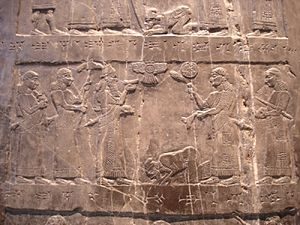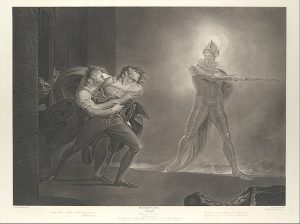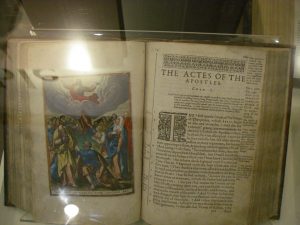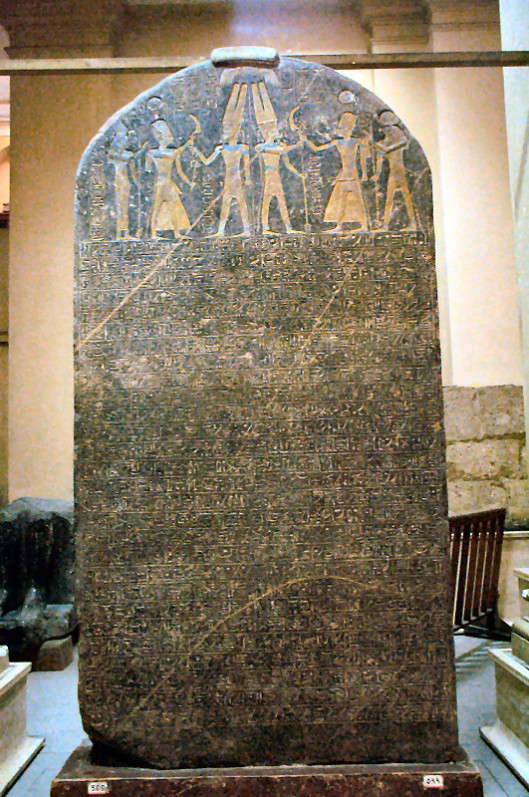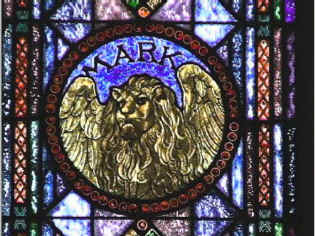Luke opened his gospel with a solid reassurance to Theophilus:
Forasmuch as many have taken in hand to set forth in order a declaration of those things which are most surely believed among us, even as they delivered them unto us, which from the beginning were eyewitnesses, and ministers of the word; it seemed good to me also, having had perfect understanding of all things from the very first, to write unto thee in order, most excellent Theophilus, that thou mightest know the certainty of those things, wherein thou hast been instructed.
One major source of Luke’s, without any doubt, is the Gospel of Mark. If Theophilus had heard stories of Jesus from the Gospel of Mark he would surely have had many questions. Mark’s gospel is less a testimony of what happened than a discourse with readers to prompt them to examine their own status in the faith and understanding of Jesus and the Kingdom of God. Mark left hanging many questions such as whether or not Jesus met Peter and the disciples again in Galilee, whether Jesus was or was not the Son of David, the nature of Jesus and Christ before the baptism, the significance of his miracles and relationships with crowds, and many more.
We may speculate that Theophilus had many of these questions all sorted out from other sources now lost to us.
But let’s assume for a moment the questions were left hanging and he was waiting for Luke to do the thorough research to sort things out for him. Theophilus may have hired Luke on the understanding that he “had a perfect understanding of all things from the very first” and that he could write up a clear orderly account of exactly what happened.
If so, what would have been the results when Theophilus eventually read Luke’s final product?
The baptism of John
If Theophilus had any questions relating to Jesus being baptized by John then they were left hanging from miles high after he read Luke’s narrative. Luke simply avoided the scene completely and did not even state that Jesus had been baptized by John — merely that he had been baptized.
Anger in response to the leper’s plea
Since the earliest manuscripts of Mark’s gospel tell us that Jesus was angry when a leper approached him for healing (Mark 1:41), it is more than likely that Theophilus had heard of this strange rumour too. He would have been disappointed had he hoped for Luke to have set this detail in order for him, since Luke, even though he knew and used the Gospel of Mark, chose to omit altogether Mark’s (or anyone’s) comment on Jesus’ emotional response at this time (Luke 5:12-16).
Some of the best miracles
Theophilus probably had heard of not one, but two versions of Jesus miraculously feeding crowds of thousands in the wilderness, and wondered if they were one and the same event. He might especially have been curious to learn more about one version that held that the feeding was in gentile territory and specifically meant for gentiles (Mark 8:1-10). If so, then he probably felt a bit cheated by his commissioned researcher opting to simplify his story by omitting any reference to the latter. Not even a clue as to how the reports of the distinctive features of the second feeding miracle arose in the first place.
Theophilus must also have been wanting to know more about Jesus’ miracle of walking on the water. Was it true that Peter likewise walked on water with Jesus? Or were all the disciples totally cowed at seeing what they thought was a ghost? And what of the story coming with a narrator’s explanation that the disciples’ reaction was related to their not understanding the miracle of the loaves? Luke’s gospel gave him no satisfaction here, either. In fact, Luke did not even include the water-walking scene at all! Was it because Luke was unable to find out the facts of the matter despite his claims for full knowledge in his prologue?
Some have suggested that Luke’s copy of Mark was incomplete. Not only was the ending missing, but also the middle chapters covering events in Jesus’ life between his feeding the 5000 and the Peter-confession and Transfiguration scenes were for some reason also missing. But Luke’s prologue claims he had much more at his disposal than a single defective copy of one gospel. If we accept the claims of his prologue then we can only conclude that he deliberately omitted certain events and miracles that must have been widely known.
How did Jesus heal?
Theophilus must also have wondered about the methods of Jesus’ healing miracles. Did he sometimes use his spit? Did he sometimes need two attempts to fully restore someone? But Luke simply omits any reference to any such miracles without any explanation.
Attitude to gentiles?
Did Jesus really refer to gentiles as dogs (Mark 7:27)? Luke does not give the satisfaction of an answer. He simply ignores the scene known to contain these words of Jesus.
When Jesus returned from his transfiguration
Some reports Theophilus had heard probably implied something strange about the appearance of Jesus when he returned to the crowds after he had been with three of his disciples on the mountain and transfigured there before them (Mark 9:15). If his hopes were raised after reading Luke’s prologue that he would finally have that clarified they were dashed again when he found Luke ignored this detail altogether.
Various accounts about a certain blind man, and Son of David claims
Various reports reached Theophilus about Jesus healing a man referred to as a son of “timaeus” or of a man named Timaeus (with so many associations that raised), others spoke of a man named Bartimaeus. Moreover, they all said that this blind man had called Jesus the Son of David, contrary to other reports that Jesus had denied this claim. One might imagine Theophilus beginning to lose patience to find that his commissioned writer simply failed to use the name of this blind man, or give any clue as to how the various opinions arose in the first place.
Further, Luke still included that confusing report of Jesus apparently denying he was the Son of David, contrary to other passages in his gospel (Luke 20:41-44). Theophilus must have suspected Luke did a rush job to finish his gospel the night before he was due to present it.
Why did Jesus curse the fig tree?
A story like this surely went the rounds and Theophilus must have been anticipating Luke’s explanation. If Theophilus had paid Luke in full for his efforts he must have felt cheated to find Luke again opting to not make a single reference to this controversial rumour.
A mystery for a reader to understand
One very spare anonymous narrative about Jesus that raised more questions than answers (known subsequently as the Gospel of Mark) that Theophilus may have read implied a certain enigma in the expression, “abomination of desolation standing where it ought not” as a mystery for readers to decode (Mark 13:14). He would be interested in knowing what Luke had to uncover about this. But when he read Luke he found that, once again, the passage of most interest had simply gone totally AWOL.
Anointing where and by whom?
Theophilus undoubtedly craved to know more about the famous episode of Jesus’ anointing and how this act, performed with very expensive spices, prompted the disciples to turn against Jesus, and for one of them to even betray him. But after reading Luke’s gospel he reflected and realized he had not read of this at all. All he could recollect was that Luke, without explanation, did include another scene, in fact a very sensuous one, where a sinful woman with very expensive perfume wiped Jesus’ feet with her tears and hair. Was Luke really denying everything he had heard till now about that momentous event?
Theophilus no doubt made a note to call Luke in the next day to ask him to explain all he had written — and had not written!
Who were Alexander and Rufus?
No doubt Theophilus had heard or even read of a certain Simon carrying the cross of Jesus, and that this Simon was identified as the father of Alexander and Rufus. How could he fail to not be curious and want to know who these individuals were and what became of them?
Luke failed his curiosity once again. He wrote as if they had never existed.
Mysterious young men at the end of Jesus’ life
Gossip flies, especially about people reportedly going naked in public after dark, and no doubt everyone far and wide had heard of one of Jesus’ followers fleeing naked on the night of his arrest.
Maybe Theophilus was kind and suspected Luke was doing his best to stop malicious rumours by not repeating them.
But then what of that young man in the tomb he had heard about? Why did Luke not give any idea where that story came from? Why did he baldly speak of two angels in the tomb without any clarification to explain the account everyone knew till then?
Did Jesus ever meet up with the disciples again in Galilee?
One thing Theophilus had long wondered about was the facts of what happened to the disciples and Jesus after the resurrection. Everyone who seemed to know spoke of Jesus appearing, or at least promising to appear, to the disciples again in Galilee. But Theophilus was at a loss to find any clear report of the details. So he hired Luke to research and write up the full story.
The least he had expected from Luke was some reconciliation of any new information (that Jesus only appeared to his disciples around Jerusalem and forbade them from going to Galilee till much later) with the incomplete and confusing accounts about a Galilee appearance everyone had heard about before Luke wrote.
Result: Theophilus sent Luke packing to look for a new patron.
Like this:
Like Loading...


